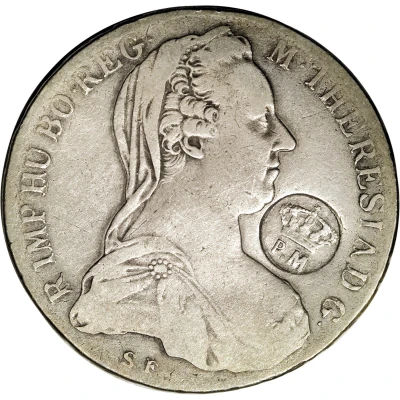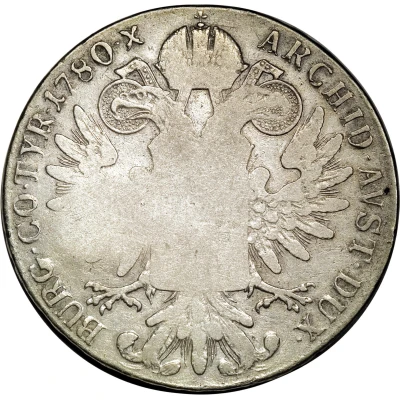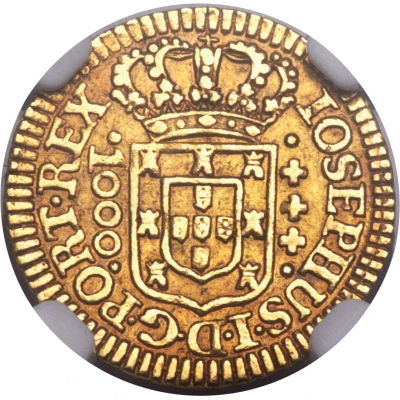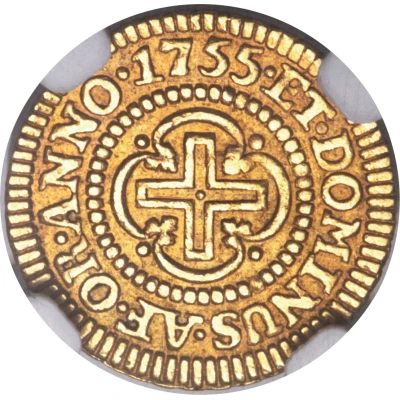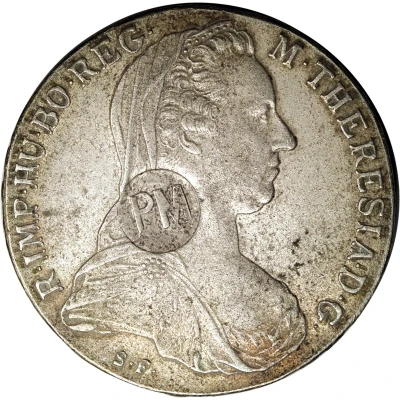
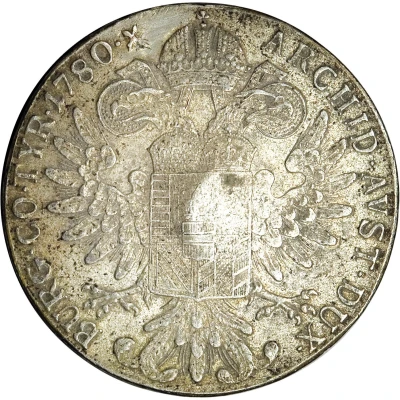

© Heritage Auctions
920 Réis - Charles I Countermark "PM" over 1 Thaler/Austria ND
| Silver (.833) | 28.0668 g | 41 mm |
| Issuer | Mozambique |
|---|---|
| King | Luís I the Popular (1861-1889) Charles I the Diplomat (1889-1908) |
| Type | Standard circulation coin |
| Years | 1889-1895 |
| Value | 920 Réis |
| Currency | Real (1706-1910) |
| Composition | Silver (.833) |
| Weight | 28.0668 g |
| Diameter | 41 mm |
| Shape | Round |
| Technique | Countermarked |
| Orientation | Medal alignment ↑↑ |
| Demonetized | Yes |
| Updated | 2024-10-06 |
| Numista | N#28660 |
|---|---|
| Rarity index | 94% |
Reverse
Script: Latin
Comment
In 1864 the coins called "Maria Teresa" was officially accepted for circulation with a value of 920 Réis. In 1887 the value was changed to 860 Réis.According to reports from the colony's government, the value varied from place to placeand this caused disruption in trade. Even the Banco Nacional Ultramarino notes were subject to a premium.
The countermark "Crowned PM" was instituted by the "NOTICE FROM THE BOARD OF FAZENDA of 05JAN1889".
A box with 40 punches, small anvils and hammers was sent from the Lisbon Mint.
Due to heavy use they quickly became inoperable.
Given the urgency, they were replaced by the stamp "PM" as there were no engravers in the colony that could do a better job (NOTICE FROM THE BOARD OF FAZENDA of 19JAN1889).
The stamp continued to be used under King Carlos and, traditionally, Portuguese catalogs "arrange" coins with this stamp during the reign of this last king.
Due to its crude manufacture, it was largely counterfeited at the time, and its counterfeiting continues today.
Interesting fact
One interesting fact about this coin is that it was issued during a time of great change and upheaval in Mozambique. The coin was minted during the reign of King Charles I of Portugal, who ruled from 1889 to 1908. During this time, Mozambique was a Portuguese colony, and the coin was used as a form of currency throughout the colony. The countermark "PM" on the coin indicates that it was issued by the Portuguese government, and the 1 Thaler/Austria marking suggests that it was intended for use in trade with Austria. Despite the turmoil of the time, this coin remains a valuable piece of numismatic history.
